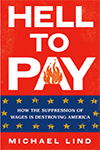The Frontier Centre for Public Policy has released the 2022 edition of Demographia Housing Affordability in Canada. read more »
Canada
New Suburbanism
New Suburbanism advances a set of ideas to deepen the conversation about the synergistic relationship between core areas, suburbs, and rural areas. It challenges the prevailing ideology that density is a virtue. It appeals for an update of planning practice, given the pandemic push and new technology pull. A set of actionable ideas referred to as the Elements of New Suburbanism are presented. read more »
- Login to post comments
Suburbanizing Canada: The 2021 Census
Canada continues to move to the suburbs, as the 2021 census data shows. This is based on a Statistics Canada analysis on metropolitan (Census Metropolitan Areas, or CMAs) population and change since the 2016 Census. read more »
- Login to post comments
Comparing Urban Densities: Winnipeg and New York
Following a recent New Geography column “Toronto Solidifies Highest Density Ranking in North America,” I received comments of disbelief, at the fact that the urban density of the Winnipeg urban area is above that of the New York City urban area. read more »
Unacceptable Views
“Canada will always be there to defend the right to peaceful protest” – Justin Trudeau, in a reference to protests in India…
Asked why he supported some protests, but was determined to crush the trucker convoy, Justin Trudeau answered without hesitation read more »
- Login to post comments
Demographia International Housing Affordability – 2022 Edition Released
Demographia International Housing Affordability rates middle-income housing affordability in 92 major housing markets in eight nations: Australia, Canada, China, Ireland, New Zealand, Singapore, the United Kingdom and the United States). read more »
- Login to post comments
Canada: Suburbs Dominate Growth - 2021 Census
Canada has released early results of the 2021 Census, with a detailed analysis of growth in Census Metropolitan Areas (CMAs). Among the 41 metropolitan areas, 77% of the population growth between the 2016 and 2021 censuses was in the suburbs, with 23% in the urban core (Figure 1). The suburbs have 78.5% of the total CMA population, with 21.5% in the urban core (Figure 2) read more »
- Login to post comments
A New Dawn for the Working Class?
The labouring masses are restless, as evidenced by the Canadian trucker strike, union drives in Amazon warehouses in the US and in demonstrations throughout the developing world. More revealing still may be the turmoil in the labour markets, where workers are changing jobs, creating their own and, overall, refusing to return to the structures of the pre-pandemic order. read more »
- Login to post comments
How America Abandoned the World—and Our Own Inner Cities
In America and across the globe, COVID-19 is diminishing people’s prospects, exacerbating inequality and creating ever-more feudal societies as the pandemic ravages the health and the pocketbooks of the poor and the poorly educated. read more »
- Login to post comments
Telework: Huge Greenhouse Gas Reductions Per Statistics Canada
Canada’s greenhouse gas emissions could be reduced as much as 8.6 megatonnes (metric tons) if “all potential teleworkers would work from home most of the time,” instead of physically commuting (traveling to and from work). The analysis was performed by Statistics Canada, the national statistics and census office. read more »
- Login to post comments






















